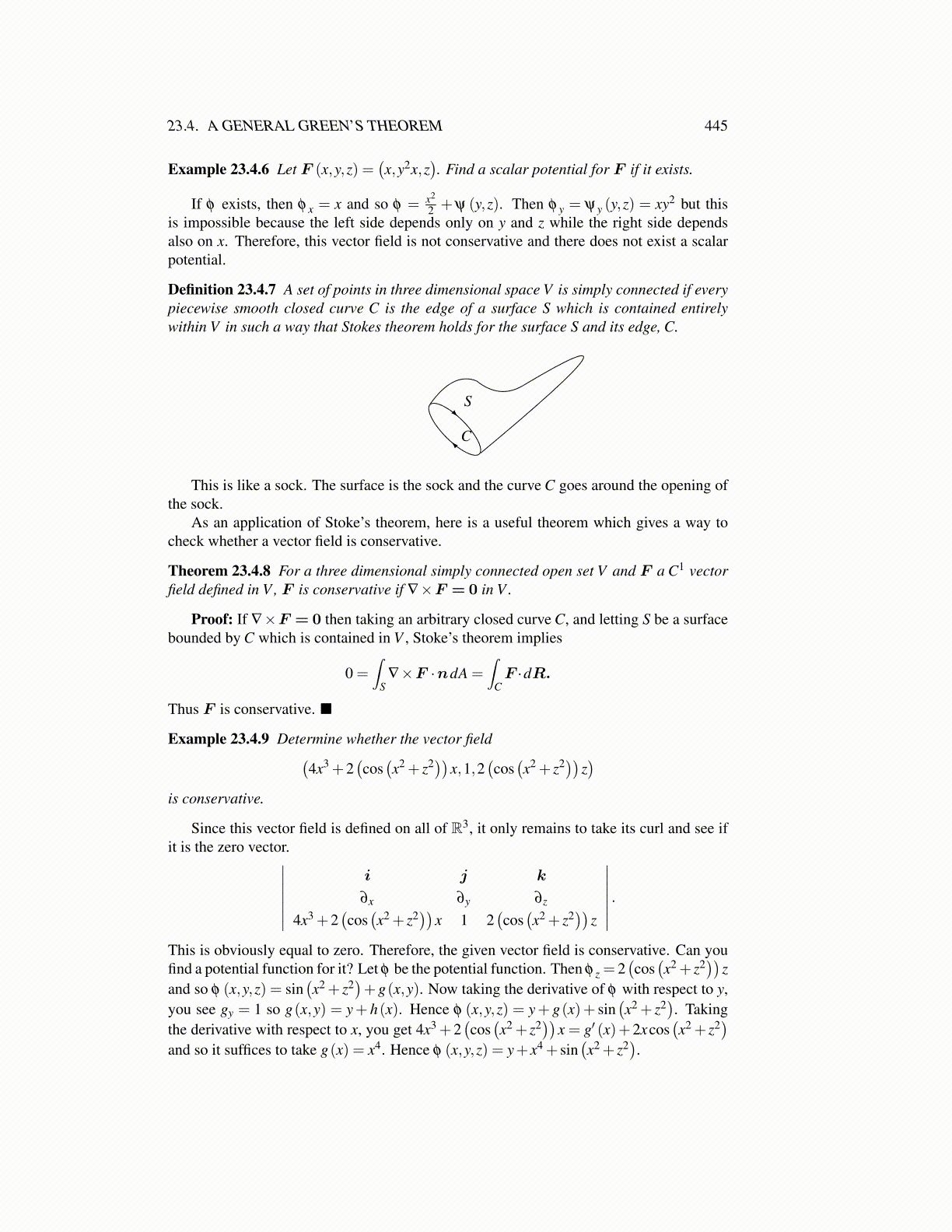
23.4. A GENERAL GREEN’S THEOREM 445
Example 23.4.6 Let F (x,y,z) =(x,y2x,z
). Find a scalar potential for F if it exists.
If φ exists, then φ x = x and so φ = x2
2 +ψ (y,z). Then φ y = ψy (y,z) = xy2 but thisis impossible because the left side depends only on y and z while the right side dependsalso on x. Therefore, this vector field is not conservative and there does not exist a scalarpotential.
Definition 23.4.7 A set of points in three dimensional space V is simply connected if everypiecewise smooth closed curve C is the edge of a surface S which is contained entirelywithin V in such a way that Stokes theorem holds for the surface S and its edge, C.
C
S
This is like a sock. The surface is the sock and the curve C goes around the opening ofthe sock.
As an application of Stoke’s theorem, here is a useful theorem which gives a way tocheck whether a vector field is conservative.
Theorem 23.4.8 For a three dimensional simply connected open set V and F a C1 vectorfield defined in V , F is conservative if ∇×F = 0 in V .
Proof: If ∇×F = 0 then taking an arbitrary closed curve C, and letting S be a surfacebounded by C which is contained in V , Stoke’s theorem implies
0 =∫
S∇×F ·ndA =
∫CF ·dR.
Thus F is conservative. ■
Example 23.4.9 Determine whether the vector field(4x3 +2
(cos(x2 + z2))x,1,2
(cos(x2 + z2))z
)is conservative.
Since this vector field is defined on all of R3, it only remains to take its curl and see ifit is the zero vector.∣∣∣∣∣∣∣
i j k
∂x ∂y ∂z
4x3 +2(cos(x2 + z2
))x 1 2
(cos(x2 + z2
))z
∣∣∣∣∣∣∣ .This is obviously equal to zero. Therefore, the given vector field is conservative. Can youfind a potential function for it? Let φ be the potential function. Then φ z = 2
(cos(x2 + z2
))z
and so φ (x,y,z) = sin(x2 + z2
)+g(x,y). Now taking the derivative of φ with respect to y,
you see gy = 1 so g(x,y) = y+ h(x). Hence φ (x,y,z) = y+ g(x)+ sin(x2 + z2
). Taking
the derivative with respect to x, you get 4x3 +2(cos(x2 + z2
))x = g′ (x)+2xcos
(x2 + z2
)and so it suffices to take g(x) = x4. Hence φ (x,y,z) = y+ x4 + sin
(x2 + z2
).